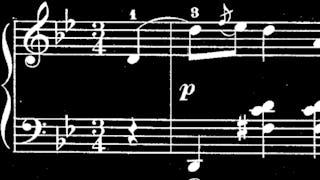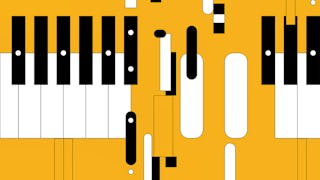This course, revised in 2022, will introduce you to the theory of music, providing you with the skills needed to read and write Western music notation, as well as to understand, analyse, and listen informedly.

Ends tomorrow: Get a Black Friday boost with $160 off 10,000+ programs. Save now.


(1,846 reviews)
Recommended experience
Skills you'll gain
Details to know

Add to your LinkedIn profile
See how employees at top companies are mastering in-demand skills

There are 6 modules in this course
What's included
7 videos10 readings1 assignment
What's included
6 videos5 readings1 assignment
What's included
8 videos6 readings1 assignment
What's included
6 videos5 readings1 assignment
What's included
6 videos5 readings1 assignment
What's included
4 readings1 assignment1 peer review
Instructors



Offered by
Explore more from Music and Art

Michigan State University
 Status: Preview
Status: PreviewCalifornia Institute of the Arts
 Status: Free Trial
Status: Free TrialBerklee
 Status: Free Trial
Status: Free TrialBerklee
Why people choose Coursera for their career




Learner reviews
1,846 reviews
- 5 stars
71.79%
- 4 stars
17.48%
- 3 stars
4.81%
- 2 stars
3.24%
- 1 star
2.65%
Showing 3 of 1846
Reviewed on Jan 28, 2021
One of the first stepping stones to becoming a skilled musician! Helped me analyse and study music in a broader and better way. Highly recommended for gaining a grasp over the fundamentals.
Reviewed on Apr 24, 2020
I learnt a lot from this course. Not only does it give you a lot of insight into music theory it changes the way you look at music and leads one to appreciate music as a whole more.
Reviewed on Apr 30, 2020
Its not as easy as it seems, it will give you a good challenge. After you finish this, you will be more confident about your music theory. Thank you University of Edinburgh! Thank you Coursera!

Open new doors with Coursera Plus
Unlimited access to 10,000+ world-class courses, hands-on projects, and job-ready certificate programs - all included in your subscription
Advance your career with an online degree
Earn a degree from world-class universities - 100% online
Join over 3,400 global companies that choose Coursera for Business
Upskill your employees to excel in the digital economy
Frequently asked questions
To access the course materials, assignments and to earn a Certificate, you will need to purchase the Certificate experience when you enroll in a course. You can try a Free Trial instead, or apply for Financial Aid. The course may offer 'Full Course, No Certificate' instead. This option lets you see all course materials, submit required assessments, and get a final grade. This also means that you will not be able to purchase a Certificate experience.
When you purchase a Certificate you get access to all course materials, including graded assignments. Upon completing the course, your electronic Certificate will be added to your Accomplishments page - from there, you can print your Certificate or add it to your LinkedIn profile.
Yes. In select learning programs, you can apply for financial aid or a scholarship if you can’t afford the enrollment fee. If fin aid or scholarship is available for your learning program selection, you’ll find a link to apply on the description page.
More questions
Financial aid available,
¹ Some assignments in this course are AI-graded. For these assignments, your data will be used in accordance with Coursera's Privacy Notice.



